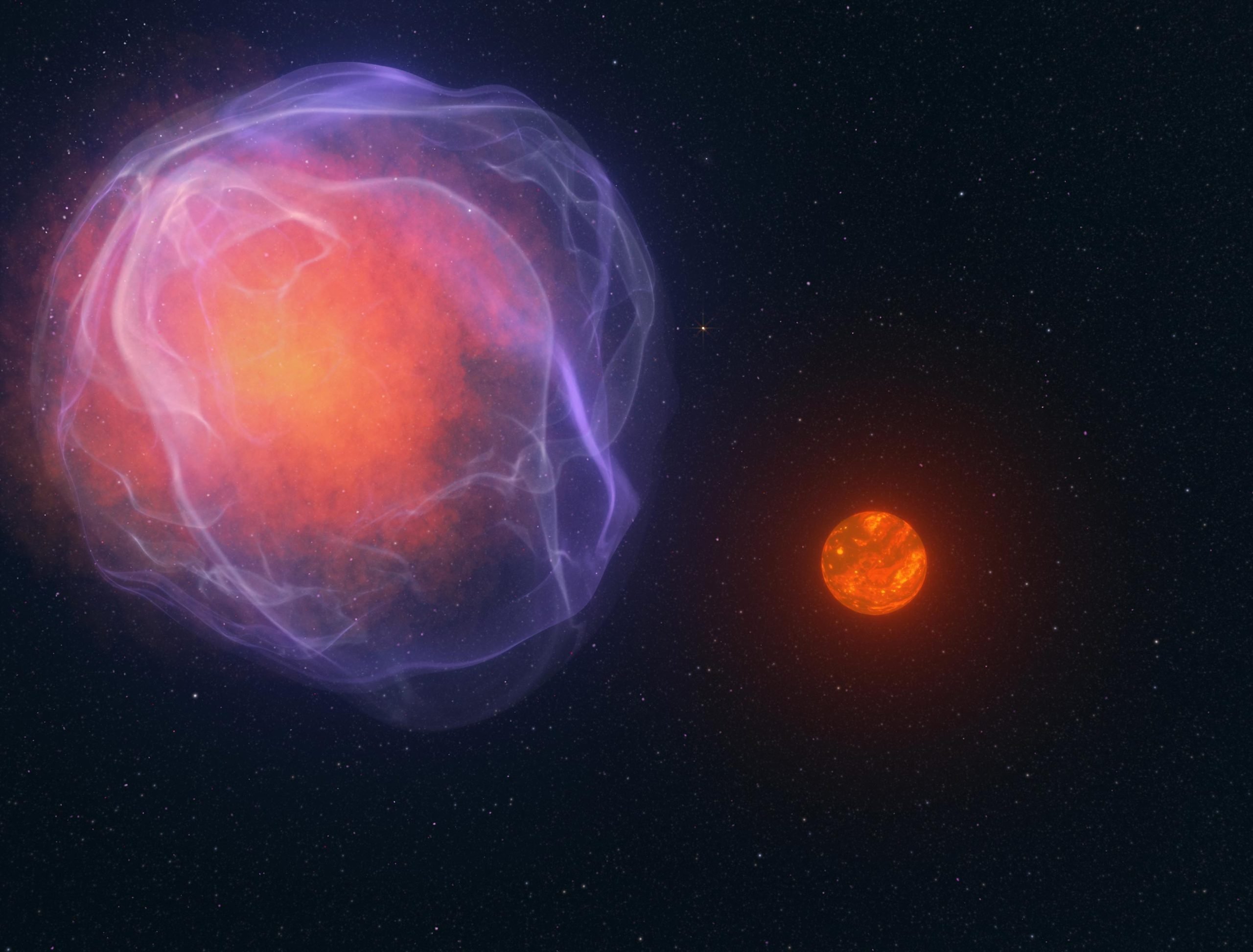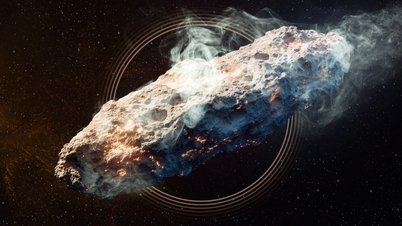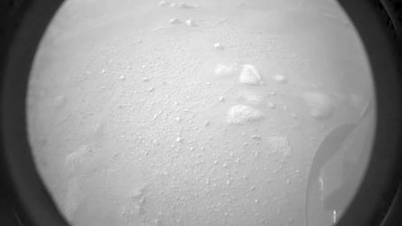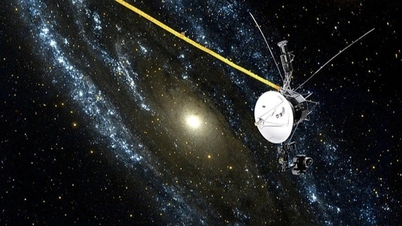(NLĐO) - The strange object named CWISE J1249 has just escaped death and is speeding so fast that it can escape the Milky Way's control.
According to SciTech Daily, citizen scientists collaborating with NASA's Backyard Worlds: Planet 9 project have discovered a strange object possessing supersonic speed, named CWISE J1249.
Traveling at a speed sufficient to counteract the gravitational pull of the Milky Way, the galaxy containing Earth, CWISE J1249 is hurtling through intergalactic space at approximately 1 million miles per hour (1.6 million kilometers per hour).
Additionally, it is the first hypervelocity object discovered with a mass similar to or smaller than that of a small star.

Graphic depicting a brown dwarf (left) next to a supernova. The brown dwarf may be the newly discovered anomaly - Graphic: Adam Makarenko / WM Keck Observatory
Initial analysis suggests this strange object could be an unusual low-mass star. Or, most likely, it's a brown dwarf.
Brown dwarfs are in a state somewhere between a star and a planet: they are too large for a planet and have no parent star, but too small to sustain nuclear fusion in their core like a star.
Therefore, brown dwarfs are sometimes called "failed stars" or "superplanets".
Brown dwarf stars aren't that rare. Backyard Worlds: Planet 9 has discovered over 4,000 brown dwarf stars.
But no other brown dwarf stars are known to be on a runaway run from the Milky Way.
In addition, this object has a unique composition. Data obtained from the WM Keck Observatory in Maunakea, Hawaii, shows that it contains significantly less metal than other brown stars and dwarfs.
This unusual composition suggests that CWISE J1249 is an ancient object, possibly from one of the earliest generations of stars in our galaxy. Therefore, it has become a treasure for researchers.
But why this object is moving at such high speed remains a mystery.
The most widely supported hypothesis is that CWISE J1249 originally originated from a binary system with a white dwarf.
This white dwarf star devoured CWISE J1249 so much that it became overloaded with matter, exploded as a supernova, and flung the brown dwarf star away.
Another possibility is that CWISE J1249 originated from a type of tightly coupled, ancient star cluster known as a globular cluster. A chance encounter with a pair of black holes with incredibly complex interactions caused it to fly away.
Source: https://nld.com.vn/nasa-phat-hien-vat-the-la-lao-nhanh-1-trieu-dam-gio-196240821102653202.htm



![[Photo] Closing Ceremony of the 10th Session of the 15th National Assembly](/_next/image?url=https%3A%2F%2Fvphoto.vietnam.vn%2Fthumb%2F1200x675%2Fvietnam%2Fresource%2FIMAGE%2F2025%2F12%2F11%2F1765448959967_image-1437-jpg.webp&w=3840&q=75)























































![[OFFICIAL] MISA GROUP ANNOUNCES ITS PIONEERING BRAND POSITIONING IN BUILDING AGENTIC AI FOR BUSINESSES, HOUSEHOLDS, AND THE GOVERNMENT](https://vphoto.vietnam.vn/thumb/402x226/vietnam/resource/IMAGE/2025/12/11/1765444754256_agentic-ai_postfb-scaled.png)

















































Comment (0)